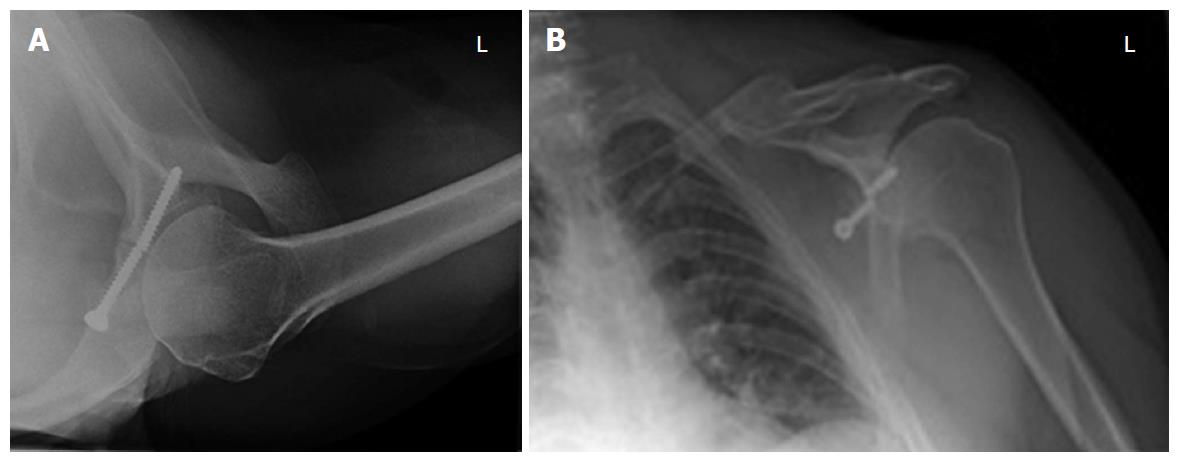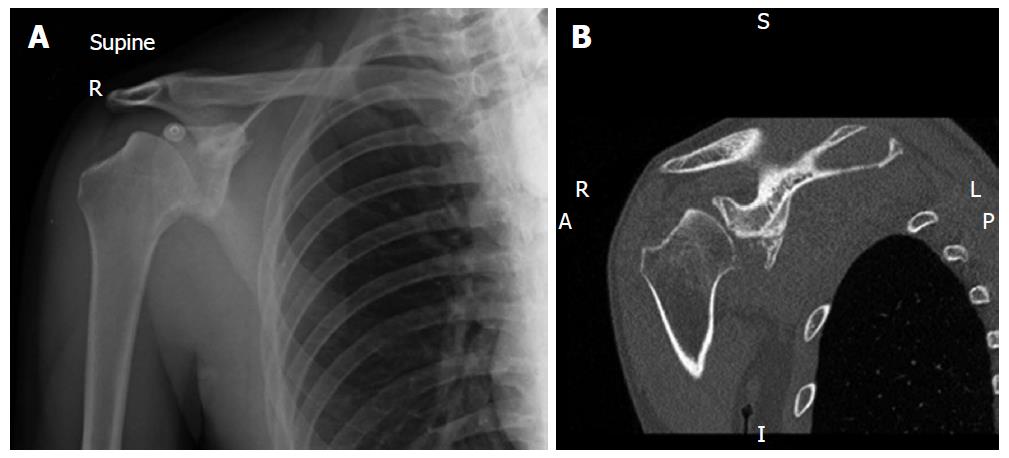Copyright
©The Author(s) 2016.
World J Orthop. Jun 18, 2016; 7(6): 343-354
Published online Jun 18, 2016. doi: 10.5312/wjo.v7.i6.343
Published online Jun 18, 2016. doi: 10.5312/wjo.v7.i6.343
Figure 1 Management of glenoid and humeral bone loss in shoulder instability.
ISIS: Instability severity index score; ORIF: Open reduction and internal fixation; pt: Patient.
Figure 2 45-year-old gentleman with previous open latarjet procedure for left shoulder instability.
Subsequent non-union of graft and failure of metalwork is seen on the axillary (A) and antero-posterior (B) radiographs.
Figure 3 Failed latarjet procedure in Figure 1 treated with an Eden Hybinette procedure using an autologous iliac crest bone graft.
The graft position and fixation with 2 screws is shown on the antero-posterior radiograph.
Figure 4 Antero-posterior radiograph (A) and computed tomography scan (B) of a 25-year-old epileptic with massive bipolar bone loss.
He was found to have > 25% glenoid bone loss and > 40% humeral bone loss pre-operatively.
Figure 5 Antero-posterior (A) and scapular Y (B) views of an epileptic patient with massive bipolar bone loss treated with a humeral HemiCap and Latarjet procedure.
Figure 6 42-year-old manual worker with anterior shoulder instability with < 25% glenoid bone loss and an engaging Hill-Sachs lesion.
He was managed successfully with an arthroscopic Remplissage and Bankart repair. Pre-operative antero-posterior radiographs (A) and computed tomography (B) images are demonstrated.
Figure 7 Antero-posterior (A) and axillary view (B) radiographs six months following shoulder fusion after failure of a combined HemiCap and Latarjet procedure in an epileptic patient with massive bipolar bone loss.
- Citation: Ramhamadany E, Modi CS. Current concepts in the management of recurrent anterior gleno-humeral joint instability with bone loss. World J Orthop 2016; 7(6): 343-354
- URL: https://www.wjgnet.com/2218-5836/full/v7/i6/343.htm
- DOI: https://dx.doi.org/10.5312/wjo.v7.i6.343















